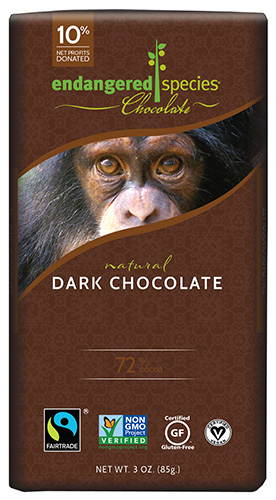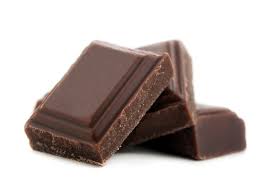4 Awesome Benefits of Chocolate!
One of my favorite ‘herbs’ in the pharmacopeia is Theobroma cacao whose seeds are used to make chocolate. On its own cacao is not sweet, but slightly bitter. The chocolate you are used to eating or drinking is the result of processing, to create cacao powder, and modifying by adding sugar and other ingredients like milk.

Cacao beans have long been prized for their health benefits because they are rich in magnesium, and bioflavonoids that act as antioxidants in the body. The beans also contain fat, protein, and fiber, making them the nearly perfect food!
How Chocolate is Made
Once the whole fruit is harvested, the constituent parts are removed from the pod. Cacao butter is removed from the bean during production and the remaining part of the fruit is used to produce raw cacao powder or cacao nibs.
Cocoa powder is produced similarly to cacao except cocoa undergoes a higher temperature of heat during processing. Depending on the amount of cacao added, chocolate may be considered milk, semi-sweet, and bittersweet.
The good news: If you can forgo a bit of the sugar and keep your portions small, chocolate has some awesome health benefits, including appetite control, heart health, and even athletic performance!
Want to know the difference between cacao and cocoa and which one is healthier?
Cacoa v. Cocoa- What you need to know
 One of my favorite bars comes from Endangered Species. This particular bar has 72% cacao and is the perfect ratio of bitter and sweet.
One of my favorite bars comes from Endangered Species. This particular bar has 72% cacao and is the perfect ratio of bitter and sweet.
When selecting a chocolate, you’ll want to choose a dark chocolate- one higher in cacao percentage- because of its greater health benefits. I recommend choosing a bittersweet chocolate with at least 70% cacao.
Did you know?
Most of the world’s cocoa is grown in a narrow belt 10 degrees either side of the Equator because cocoa trees grow well in humid tropical climates with regular rains and a short dry season.
1. Chocolate and Atrial Fibrillation (AF)
Atrial fibrillation is the most common type of irregular heartbeat. The abnormal firing of electrical impulses causes the heart to beat irregularly. The Danish Diet, Cancer, and Health Study (Heart, 2017), a large prospective cohort study, found that, compared to individuals reporting chocolate intake less than once per month, the rate of AF was lower for people consuming chocolate regularly, with similar results for men and women.1
2. Chocolate and Appetite Control
One of the most common symptoms of menopause is weight gain. A relative decrease in metabolic rate combined with fat storing as a means of alternate estrogen production can make it difficult for post-menopausal women lose or maintain weight. A 2017 study published in Appetite, looked at the consumption of dark chocolate for its ability to control appetite. The study concluded a positive effect: “Compared to the impact of milk and white chocolate consumption, dark chocolate attenuates subsequent food intake in postmenopausal women.2 It’s important to note here that chocolate was consumed in small amounts.
3. Performance Enhancement
A 2015 study in J Int Soc Sports Nutr. looked at the effects of chocolate on athletic performance.3 The study, while small, showed that cyclists who consumed 40 grams of dark chocolate a day displayed slight improvements in distance compared to their performance after consuming white chocolate.
4. Chocolate and PMS
It’s well known that chocolate cravings occur during PMS, but it’s less well understood why these cravings occur. Of course, chocolate tastes great, but there may be a deeper cause for these cravings. Chocolate contains the mineral magnesium. So a chocolate craving may be due a preexisting magnesium deficiency or a deficiency caused my loss of this mineral after blood loss.
In either case chocolate will confer some benefits of magnesium including its ability to relieve anxiety.4 The trick is that chocolate can also come with a very high calorie count (at least 150 calories per oz./28.4g). Dark chocolate contains about 41mg of magnesium per oz. Or you could use this supplement from Standard Process which contains 210 mg of magnesium at a very light 10 calories. J
References
- Chocolate intake and risk of clinically apparent atrial fibrillation: the Danish Diet, Cancer, and Health Study
- Consumption of dark chocolate attenuates subsequent food intake compared with milk and white chocolate in postmenopausal women
- Dark chocolate supplementation reduces the oxygen cost of moderate intensity cycling
- The Effects of Magnesium Supplementation on Subjective Anxiety and Stress—A Systematic Review







